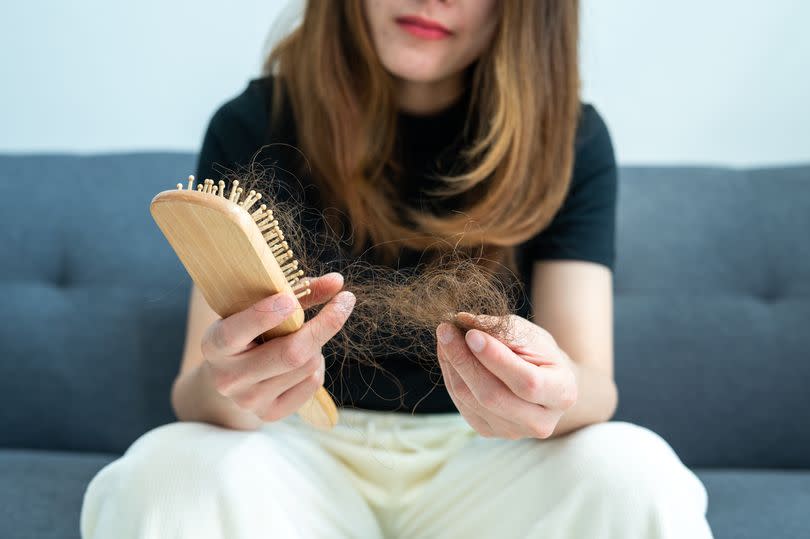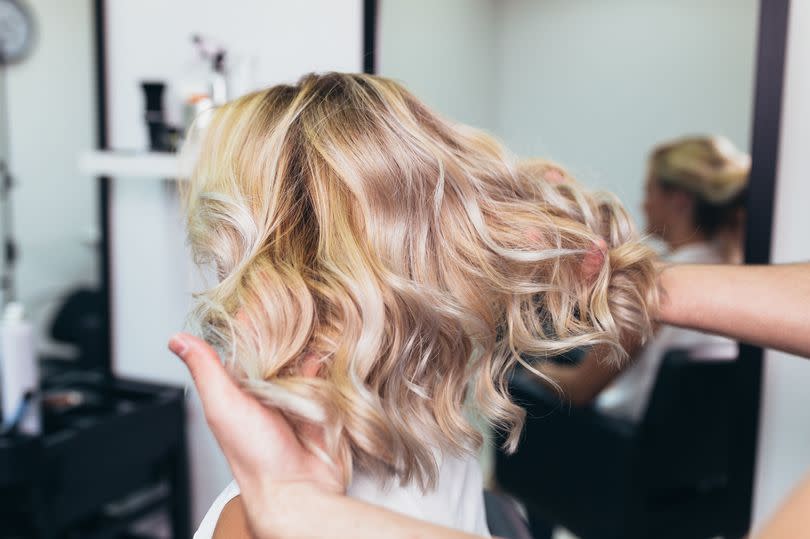I’m a GP — here are 8 reasons why your hair might be thinning and what you can do about it

Thinning hair and hair loss can be stressful, especially for women who normally have a lot of hair. At times, it can cause feelings of shame or insecurity.
According to a LloydsPharmacy doctor, thinning hair in women can occur at any age and come in different forms, such as thinning on the crown of the head or complete baldness. Any type of hair thinning can feel particularly worrying, especially if the reason behind it is unknown.
According to Dr Bhavini Shah of Lloyd Pharmacy, it's important to understand what might be causing the issue, and Dr Shah has shared eight possible causes of thinning hair in women. Professional hair stylist, Megan Brooks, from IHS Hair Replacement London, has also given advice on the best hairstyles to try if you're experiencing thinning hair.
According to Dr Bhavini Shah, there are a number of factors that can trigger, or are associated with thinning hair in women. They are:
Female pattern hair loss
Female pattern hair loss is also known as androgenetic alopecia. According to Dr Bhavini Shah, it is common and can occur at any age, but it's thought that 40% of women aged 70 or over experience the condition in some form. For the latest health news, sign up to our newsletter here.
Dr Bhavini Shah added: "Women with androgenetic alopecia will usually experience gradual thinning of the hair, typically on the top of the scalp and some women notice their hairline receding."
The condition is thought to be hereditary and while it doesn't usually cause baldness like in men, it can still affect self-esteem and confidence. The GP recommends that if you are worried about female pattern baldness, it is worth talking to your doctor, who can advise you on possible treatment options.
READ MORE: Diabetes 'genetically linked' to breast, bowel and pancreatic cancer says new study
Alopecia areata
Alopecia areata can also be another cause for hair loss. Alopecia areata is an autoimmune disorder that can lead to unpredictable hair loss. Dr Shah said: "Alopecia areata is a condition where the immune system mistakenly attacks the hair follicles, which usually leads to hair loss in small, round patches on the scalp or other parts of the body. It can affect people of any age and may come and go unpredictably. Some individuals may experience regrowth of their hair in the affected areas, while others may not. While the exact cause is unknown, genetics and environmental factors may play a role."
Traction alopecia
Traction alopecia is a type of hair loss caused by prolonged pulling or tension on the hair follicles. According to Dr Bhavini Shah, this often happens when hairstyles like tight ponytails, braids, or extensions are worn regularly.
"Over time, the constant pulling damages the hair follicles, leading to thinning or bald patches, especially around the hairline or where the hair is pulled tightly," Dr Bhavini explained. "It's best to avoid repetitive wear of hairstyles that pull too tightly and give the hair regular breaks from tension, especially if you notice your hair thinning. Opting for looser hairstyles and avoiding excessive use of hair accessories can help protect the hair from damage."
Telogen effluvium
According to the GP, Telogen effluvium is a type of temporary hair loss that occurs when a large number of hair follicles enter the resting phase of the hair growth cycle prematurely.
"During telogen effluvium, more hair than usual falls out, leading to thinning of the hair, but it's typically reversible once the underlying cause is addressed," the doctor added. "This can be triggered by various factors such as physical or emotional stress, illness, hormonal changes, or nutritional deficiencies. While telogen effluvium can be distressing, it usually doesn't result in complete baldness."
Stress-related hair loss
Although stress by itself does not directly cause hair loss, it can contribute to other hair loss conditions such as telogen effluvium. Dr Bhavini added: "When the body is under stress, it releases a hormone called cortisol, which can disrupt the natural hair growth cycle and cause hair to enter into the resting phase prematurely."
Menopause
A lot of hormonal changes come during menopause, in particular, a decrease in oestrogen levels. As a result, this can affect hair growth cycles and often leads to thinning of the hair, especially at the crown and along the parting line. Dr Bhavini said: "While not all women experience hair loss during menopause, those who do may find it distressing. Although menopausal hair loss can't be completely prevented, there are treatments available, such as hormone replacement therapy or minoxidil, that may help slow down the thinning process and promote hair growth."
Poor diet
Hair loss can also be down to a poor diet. According to Dr Shah, a GP can look into this and recommend "the best course of action". The GP said: "A lack of essential vitamins and minerals such as iron, zinc and vitamin D can contribute to hair loss, particularly if you are experiencing an iron deficiency. Vitamins are essential nutrients that play a crucial role in hair health and getting the adequate amount is important. If diet and health related hair loss is causing concern, your GP will be able to check this and recommend the best course of action. This alongside a well-balanced healthy diet is the best way to ensure your body is getting the nutrients it needs."
Using harsh hair products
Using harsh hair products, such as bleaching, perming or extreme hold hair sprays can damage the hair and result in hair loss. Dr Bhavini Shah explained: "Bleaching, perming, and extreme hold hair sprays contain harsh chemicals that can cause hair loss by damaging the hair follicles and strands. Certain chemicals found in shampoos, conditioners, hair dyes, and styling products can strip the hair of its natural oils, leading to dryness, breakage, and hair loss. Ingredients like sulphates, parabens, and formaldehyde can irritate the scalp and weaken the hair, making it more prone to falling out. Opt for products that are gentle on your hair and scalp, and try to avoid over-bleaching."
What hairstyles are best for thinning hair?
According to professional hair stylist Megan Brooks, there are multiple hairstyles to adopt if you're experiencing thinning hair. The expert firstly suggests trying a side parting, which adds "instant volume to thin hair".
"You can flip the hair from one side to the other as you wish to emphasise volume on the area which most needs it creating the illusion of full, thicker hair," Megan added. She also suggested that short hair with curtain fringe or bangs would work for thinning hair as well, whereas long hair tends to "look thinner" due to its weight.
The hairstylist said: "Short hair with curtain bangs is a classic style if you have thin hair. A shorter cut creates fuller and thicker looking hair instantly as the ends are blunt, giving the appearance of more density.

"Longer hair tends to look thinner because the weight of the hair pulls it down, making it appear flatter. Try adding bangs to add volume and dimension to the hair by framing the face and creating layers."
She also suggested a long A-line bob cut hairstyle. "Try a chic A-line bob or lob (long bob) that will add volume and give some bounce," she explained. "This will give the illusion of thicker hair, especially when styled with soft waves or curls. This style adds volume and dimension to thin hair while maintaining a trendy look."
And lastly, the expert suggested a wispy layered hairstyle. She said: "Wispy layers, instead of heavy layers, will add texture and volume to thin hair by removing weight, adding shape and creating movement. They are light, airy and seamless - creating hair that's easy to style."

 Yahoo News
Yahoo News 
